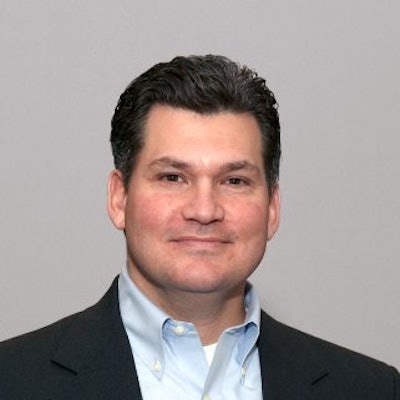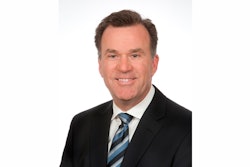
Managing employee sleep health is a new and innovative way for companies to have a safer, more productive and healthy workforce. But for the transportation and logistics industry, managing sleep health is not new. In fact, for the last 20 years, transportation companies had to grapple with a lack of formal regulation, a lack of consistent standards related to fitness for duty and the treatment compliance necessary to keep the wheels on the road, the airplanes in the air and the trains on their rails.
Untreated or unmanaged obstructive sleep apnea (OSA) has a serious impact on the transportation industry, its workers and the prosperity of those companies responsible for delivering the goods that keep our economy growing. Unfortunately, few innovations in managing OSA were available until now. Therapy for OSA is hard stuff and it takes significant behavioral change to achieve results. But transportation companies can’t ignore or haphazardly address the industry trend that more and more of their drivers are being flagged for a sleep test, or grounded until they have a sleep test. This is causing significant cost increases, downtime and waste in a critical industry that is already facing driver shortages and high turnover rates.
Fatigued transportation and logistics workers pose a serious risk to themselves, their companies and the public in general. Importantly, there is more at risk than just safety. Those who suffer from unmanaged OSA are not only 2.9 times more likely to cause a workplace accident, they cost 3.6 times more in medical and pharmacy costs than the average associate, and they incur 242 percent more sick days than those within the mean. The facts speak for themselves—on average, it takes someone with OSA 10 years to seek treatment, all the while developing and/or exacerbating comorbid diseases, such as type 2 diabetes, hypertension, coronary artery disease and obesity, to name a few. This has a dramatic impact on not only a company’s bottom line, but it also effects customer service and challenges optimal productivity.
We live in a 24/7 world, and with significant pressure to make the delivery on time and in full, companies need an alert and effective workforce working optimally each day. If you have a driver taken out of service due to a risk for OSA, it can be costly for both the driver and the company. Left to themselves to navigate the current healthcare system, a driver may wait, on average, 132 days to get through doctors’ appointments, setting up and completing a sleep test, receiving a diagnosis and finally getting the necessary therapy (positive airway pressure, or more commonly, CPAP) to solve their issue. If you don’t have access to that driver, your company still has to figure out how to move freight and manage the reduction in capacity. Modern sleep programs can take as few as 12 to 18 hours to get a driver tested, on therapy if needed and back on route.
Saving money from eliminating waste is only part of the equation for those that seek a fully comprehensive sleep health program. Technology-enabled sleep health programs allow for population screening, on-site testing and treatment, education and continuous care—all done through teleclinics. The results can be backed up with data. One of the most important factors in any modern sleep program is to accurately diagnose the driver in the convenience of their home, cab of the truck or a location along their route. This eliminates the need, time and cost of sending the driver off their route to an expensive sleep clinic. Then, following a positive diagnosis, it is critical that drivers receive personalized, expert medical care and support in order to be successful with their therapy. While traditional PAP therapy compliance rates are 30 to 60 percent for drivers who need ongoing treatment, modern, service-driven sleep solutions are seeing compliance rates in the 90 to 99 percent range.
This allows participants to become healthier, more productive and safer. Companies that invested in population sleep health programs can garner savings in healthcare costs (23 percent), preventable accidents (70 percent reduction), engagement (34 percent increase in vitality) and productivity (25 percent more productive). The drivers will be healthier, translating to more days driving, more miles logged per shift and incremental benefit for the transportation company.
Proper sleep is necessary, and we all need to make sure we are properly repairing and preparing for the rigors of tomorrow. Sleep is the cornerstone of positive, healthy and productive wakefulness. Companies that provide comprehensive sleep health programs see the results in their associates and in their financial statements. Bottom line—the logistics business is about efficiency and improved driver performance, which leads to a more profitable supply chain. It’s about how to execute at a higher level, while lowering costs and reducing risk. A more modern sleep program addresses and improves on those areas, and can provide the results to prove it.
Help exists, and through technology, companies can save money in the delivery of care and the outcomes of that care. Many drivers don’t live close to a sleep lab and they don’t have the means to wait five months to navigate the healthcare system. Technology-driven teleclinics allow for those drivers to get the care they need, when and where they need it. OSA is a chronic condition, and needs to be continuously monitored and modified as individuals change. Treatment for OSA requires behavioral change, and those companies that seek a comprehensive sleep health program receive the necessary continuous care to help their associates navigate the tough times of acclimating to therapy, and continuously using that therapy so it solves the issue of OSA immediately and permanently.


















